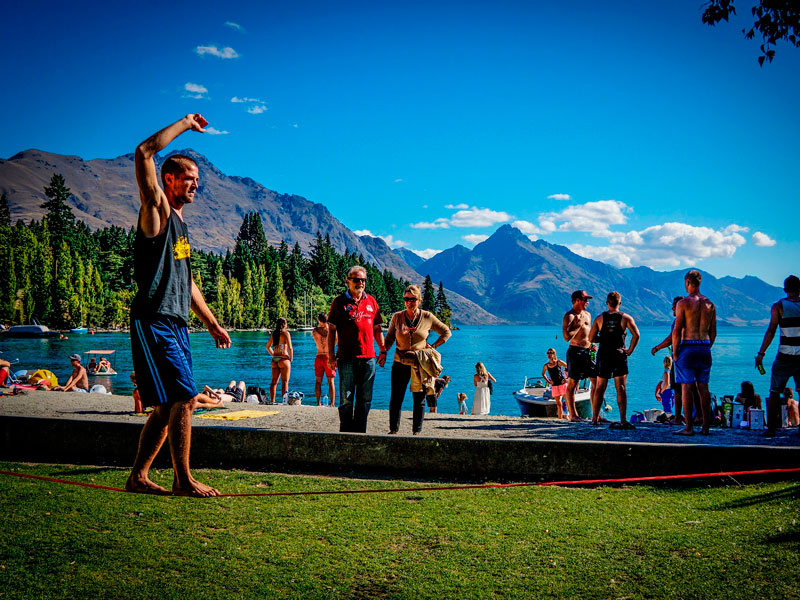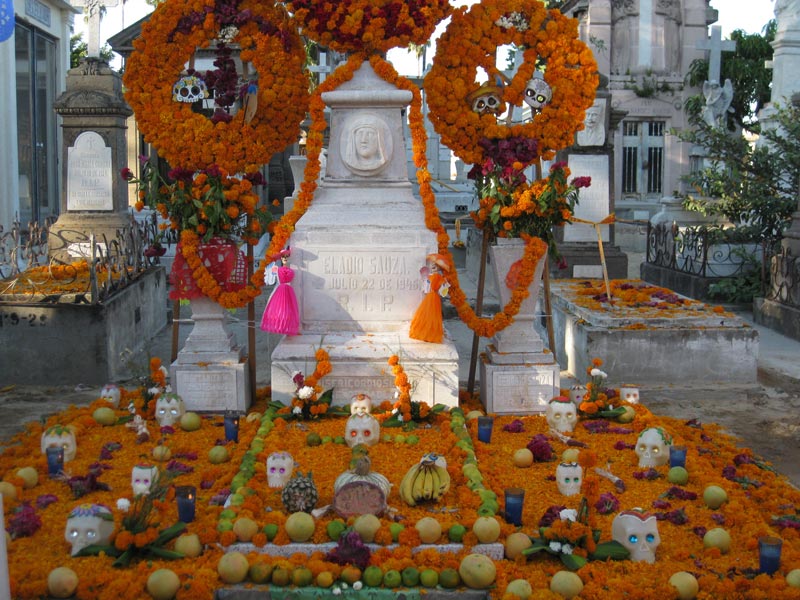IIn this unit, you will review the Simple Present. You will use it to express habits, generalisations and permanent facts. You will also read about how people socialise in New Zealand. Then, listen to people describe the new countries they have moved. You will learn about daily, cultural and leisure activities in other countries. Finally, you will have the opportunity to describe all these things in your own country!
At the end of this topic you will:
Identify information in Simple Present in to talk about habits, generalisations, and facts. You will practice the affirmative, negative and interrogative forms. You will also talk about activities in English-speaking countries such as sports, cultural and leisure.
Watch the following video about the Simple Present.
Some English verbs are considered as “State verbs”. This means, instead of describing activities, they describe conditions that exist. They can be classified according to the situation they refer to.
Hover the mouse over the image to display the information.
Listen to three people, talking about their countries and sharing opinions about other cultures. Pay attention to how they use the Present Simple.
Do you remember any affirmative, negative or interrogative sentences from the previous conversation? If necessary, listen to the conversation again and try to identify them. Notice how they are used to express generalisations and keep a conversation going.
Now you will review the affirmative, negative and interrogative forms in Simple Present.
Subject + verb + complement
One example in the audio is:
Almost everybody practices sports in Australia.
Other examples with longer subjects or complements are:
Queen Elizabeth lives in Buckingham palace.
The cat’s fur feels soft.
Many foreign tourists visit London in the summer.
Polar female bears and their cubs usually sleep in underground dens through the long winter.
Subject + auxiliary (not) + verb + complement
Remember, you need to use an auxiliary before the verb in negative sentences, except with the verb “TO BE” and when we use negative words (like “never” or “nobody”).
Some examples from the audio are:
Young people never eat salads.
Not everybody has a garden.
Other examples with an auxiliary are:
I do not (don’t) recognize that man.
Australian people do not (don’t) drink as much beer as Americans think.
New Zealand does not (doesn’t) have extremist right wing political parties.
The typical American teenager does not (doesn´t) eat very healthy food.
Example with the verb TO BE:
This lesson is not (isn’t) difficult.
Other examples with negative words:
Nobody likes to receive bad news.
Male mosquitoes never bite, only females need blood.
(Question word) + auxiliary + subject + verb + complement?
In interrogative sentences you also need to use an auxiliary, except when the subject is not known.
One example from the audio is:
What do people in Australia think about the United States?
Does everybody live in houses with gardens?
Other examples with an auxiliary are:
Does Australian English sound like American or British English?
What sports do Mexican kids practice at school?
Examples without an auxiliary:
Who lives in a big city?
Who practices water sports?
What colors relax more?






Part one
In this part of the exercise, you need to distinguish if you need an affirmative or a negative form of the verb. First, choose the most suitable verb from the list for each sentence. Then, write the verb in the correct form.
Part two
Are you ready for a challenge? You are going to show how well you can ask questions in English and how much you know about foreigners.
You need to match a blue card with a red one to form a correct question. Good luck!

Activity 1
As previously covered, we use the Present Simple to talk about facts, generalisations, habits and states. Now you will read information about one of the most beautiful places on Earth -New Zealand. You will distinguish the use of Simple Present to talk about a country.
What do you know about this country? Where is it? What is it famous for? Have you ever seen it in movies… or been lucky enough to visit it?
Understanding local customs is one of the hardest things to learn in any new country. A culture may sometimes seem like ours, but in reality, it may be harder to understand its social differences. Kiwis (people from New Zealand) describe themselves as “friendly but reserved” and "open but respectful”. But what exactly does that mean? Well, a Kiwi will tell you.
Socialising
Do you want to know how we socialise in New Zealand? Well, we like sharing food. It is a traditional Kiwi way of bringing people together in a relaxing atmosphere. We love picnics and barbeques too. It’s common to contribute to our neighbour’s hospitality by bringing food or wine to share. By the way, even if the host says “don’t bring anything”, you should still bring a small gift.
Be aware that New Zealanders have a relaxed attitude to invitations. So, sometimes they will say they are coming to a party and not turn up. Don’t take it personal, in fact, it doesn’t mean anything.
Both, coffee and tea are an essential part of Kiwi socialising. If you visit someone’s home you’ll usually be offered a coffee or tea. The expression “going out for coffee” (even if you drink tea) is common.
Alcohol
It’s true that we have a drinking culture, but it is also okay to have a non-alcoholic drink when you are socialising. As in other countries around the world, the legal age for buying alcohol in New Zealand is 18. There are strigt rules against providing alcohol for under age people; you could even go to jail.
Socialising at work
Socializing is also common at work. We like sharing our morning or afternoon teas. We often celebrate someone’s birthday or other special events on the team. Generally, everyone brings some food to share. We call this a “bring a plate” occasion. If someone “shouts” it means they are providing the food or drink at their cost - no one will raise their voice!
Going for drinks after work on Friday is quite common in New Zealand too. This is for work colleagues, so family members don’t usually come. Although this depends on the workplace. If you’re not sure, ask. One thing is for sure, at these events, it’s best to stop talking about work least.
Adapted from New Zealand Now Govt. (2016, August 31). Customs & communication. Retrieved on 2017, March 06 from: https://www.newzealandnow.govt.nz/living-in-nz/settling-in/customs-communication





Activity 2
Is it too difficult to live in a new country? Remember you can use the Present Simple tense to describe the people and culture of other countries. Now you will analyse how the Simple Present is used to describe the people and culture of four countries.
You are going to listen to a radio show. The host is interviewing three people who are now living in a different country. They will give their opinions about their host countries.
The host is Nicole.
The guests are:
Sean, an Irishman that is living in New York, USA.
Sharon, a Canadian that is living in Helsinki, Finland.
Stephen, an Englishman that is living in Hungary.
Listen again to what they say about people in their host country. Then choose the country that each statement describes. At the end of the exercise, you can know your score. You can repeat the audio several times, but you only have two opportunities to answer.

Raymond, N. (2013). World Map – Abstrac Acrylic [illustration]. Retrieved on 2017, March 14 from http://bit.ly/2npCFJ3

Activity 3
In the previous content, we used the Simple Present to describe repeated actions. So, you can use it to describe a festival or celebration that takes place in your country.
You are going to write a composition about a celebration that you like, and you would like foreigners to know more about. To achieve this, you need to consider the following:

Greiner, T. (2011). Day of the Dead [photo]. Retrieved on 2017, March 14 from http://bit.ly/2npD79Z

Thelmadatter. (2008). GritoIxmiquilpan-México [photo]. Retrieved on 2017, March 14 from http://bit.ly/2nktwog

Activity 4
As reviewed, Simple Present is used to talk about habits, states, facts and generalisations. So, it is common to describe cultural and leisure activities with it. Now it is time for you to practice Speaking using the Simple Present.
If you want to have friends from other countries, you can invite exchange students to stay at your house. It’s an excellent way to get to know other people and to become more cosmopolitan!
Imagine that you have volunteered to receive a foreign college student for a semester. Your offer has been accepted, and now you are about to receive a guest from New Zealand. He is going to take a class and do some professional practice in Business Management for a company here.



First, make a list of the things that you think he should be familiar with. This is his first time in Mexico, and he is a bit worried about living here. He is also interested to know how people behave in an office, what people usually do or don’t do.
Remember you can use Present Simple to talk about people's activities, as well as to compare different cultures and countries. Before you record your speech, consider the following aspects.
You have reviewed the use and structure of the Simple Present. In the following exercise check if you have used it correctly.
The following exercise is divided into two parts. Read the instructions for each section.
• Eastwood, J. (2006). Oxford Practice Grammar. Intermediate. Oxford: Oxford University Press.
• Soars, L. (2016). New Headway. Intermediate. Student’s Book. Oxford: Oxford University Press.
• Pye, D. (1996). CAE. Listening & Speaking Skills. Cambridge: Cambridge University Press.
• D'Amico, D. (2014). Big Ben [photo]. Retrieved on 2017, March 07 from http://bit.ly/2lAYAQi
• [English Breakfast is Like Darjeeling...] [photo]. (2009). Retrieved on 2017, March 07 from http://bit.ly/2lAwULi
• [Canada] [photo]. (2006). Retrieved on 2017, March 07 from http://bit.ly/2mBreQP
• RichardBH. (2012). OAC '85 Hockey [photo]. Retrieved on 2017, March 07 from http://bit.ly/2meY3R7
•[Belated thanksgiving bourbon pecan pumpkin cheesecake] [photo]. (2009). Retrieved on 2017, March 07 from http://bit.ly/2naKtgM
[Tornado Alley Diagram] [illustration]. (n. d.). Retrieved on 2017, March 07 from http://bit.ly/2mBqtHK
• Green, R. (1997). Moving with Grammar. Singapore: Beaumont Publishing.
• Birdsall, M. (2000). Festivals and Special Days in Britain. UK: Scholastic Inc.